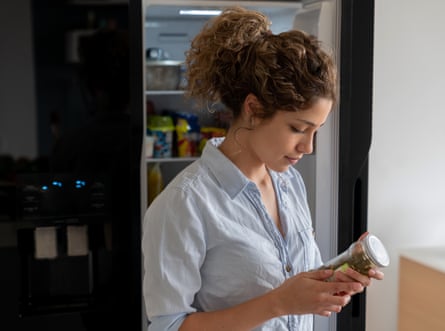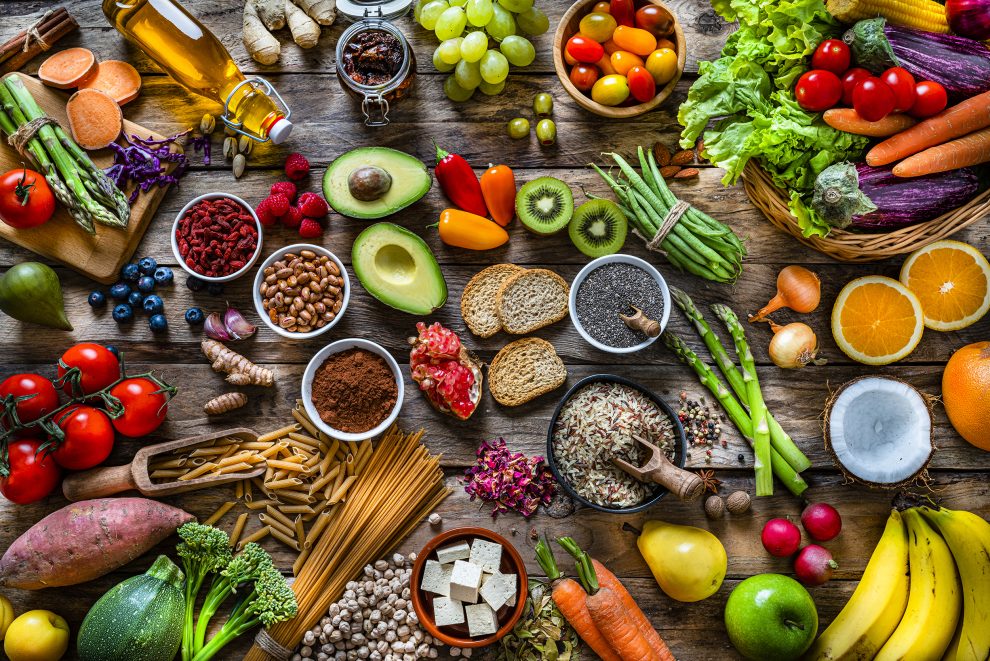Priyanka Naik has been looking for creative ways to reduce food waste for as long as she can remember. A vegan chef, author and TV personality, she often turns kitchen scraps into inventive new meals and packs up restaurant leftovers – including the bread basket – to take home for later. Instead of tossing the white rice that comes with her takeout meals, which she says she’s “not a huge fan of”, she might throw it in a food processor with beans, potatoes and spices, and shape the mixture into patties for veggie burgers.
From a climate perspective, Naik’s approach makes sense. While food waste is difficult to measure, one estimate by the UN Environment Program found that if food waste were a country, it would be the third-largest emitter of greenhouse gasses after China and the US.
“About 30 to 40% of the food in the US goes uneaten each year. And about 40% of that waste occurs in our homes,” said sustainable food systems specialist at the Natural Resources Defence Council (NRDC) Andrea Spacht Collins.
While it’s important to address the systemic factors and corporate actors that contribute to a wasteful food system, Collins noted that this is one arena where individual solutions really can add up. “Preventing food from becoming waste across the globe is the most impactful solution we have to addressing climate change now,” she said, pointing to research by Project Drawdown.
Here are expert tips on four ways to reduce food waste at home.
Plan ahead, shop mindfully
Avoiding food waste can start before you even get to the grocery store or farmer’s market. Collins noted that making a grocery list and sticking to it can help ensure you don’t get home and find that you’re missing a key ingredient that will derail your meal plans and keep you from using the other ingredients you bought.

Advertisement
Naik added that the American tendency to buy in bulk or try to knock out a month’s worth of shopping in one go can also lead to excessive purchasing that results in food spoiling because it wasn’t used up in time. While she noted that different lifestyles allow for different rhythms, she recommended more frequent, smaller grocery runs rather than a few big ones; she usually tries to shop every Saturday or Sunday to prep for the week ahead.
Her other recommendation: “Do not go to the grocery store hungry,” she said, unless you want to get home and realize you’ve somehow bought five bags of tomatoes you don’t need. “The state of mind that you’re in when you’re shopping greatly affects the outcome.”
Store food properly
“We all know that if you leave milk on the counter, it’s going to spoil faster. But there are similar tricks that you can use around how you put away your vegetables and your fruit in order to keep them good longer,” said Collins.
She pointed to the NRDC site savethefood.com as a source for practical tips, and highlighted some of her favorites: stowing apples separately from other fruit, since apples release a hormone called ethylene that can make other produce spoil faster; placing fresh herbs stem-side down in a water-filled cup in the refrigerator almost like they’re a bouquet of flowers; keeping mushrooms in paper bags rather than plastic so they don’t get slimy; putting a paper towel inside the bag you keep your greens in to absorb excess moisture; and storing bread in the freezer for freshness.
Dr Hannah Birgé, a senior agricultural scientist at the Nature Conservancy, noted that creative approaches to storage cannot just prolong food’s lifespan, but also make you more likely to use what you have. Switching to smaller, clear containers for food storage has helped her family more easily see what they have at a glance so it’s less likely to be forgotten in the back of the fridge.
Scrap cooking
One of the ways people throw away food without even realizing it is by not recognizing that what they think of as inedible might in fact be both delicious and nutrient-dense. According to Naik, this is particularly true with produce.

Advertisement
“Many times the peel or the leaves of the vegetable can be denser in nutrients than the actual ‘meaty’ part of the vegetable,” she said. Carrot tops, for example, can be repurposed into a delicious pesto, and pumpkin skin is just as edible as the flesh – sauteed with oil, the peel softens right up.
Besides finding uses for every part of the food you have while cooking, Naik also points out that there are endless ways to repurpose leftovers so you don’t get too bored of the flavors to finish them off. Candied yams left over from the holidays can become sweet potato biscuits, cranberry sauce could be used to whip up seasonal cocktails or be enclosed in puff pastry to become tasty hand pies, and (for carnivores, unlike Naik) a turkey frame and uneaten stuffing could be transformed into a turkey dumpling soup.
Disposal and composting
You don’t necessarily need to throw something out just because the expiration date on the package has passed, said Collins. “Contrary to popular belief, the ‘best by’ date on food is not federally regulated, which leads to a lot of food that’s perfectly good being tossed,” she said. “Your nose and your tongue are going to tell you whether it’s gone bad far better than the date is going to.”

Even so, there will always be some things – think eggshells or banana peels – that you’ll want to throw out. That’s where composting comes in. Whether you have a backyard space you can devote to your own compost heap, or a drop off-site or pick up service in your city, composting can be a “gamechanger”, said Dr Birgé, for reducing the amount of food going to landfills.
In the end, said Collins, there’s no one approach that will work for every person or household. “It’s important for each person to look critically at why food is tossed in our homes, and then to find a solution that matches that,” she said. “There’s a way for each of us to change small behaviors that then leads to a big solution.”
Source : TheGuardian



























